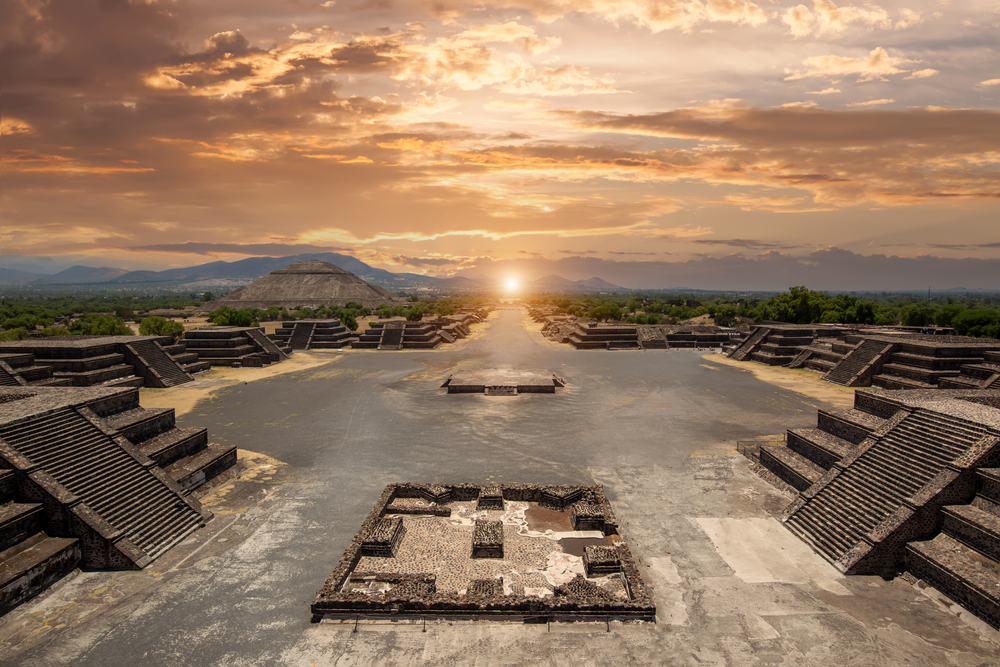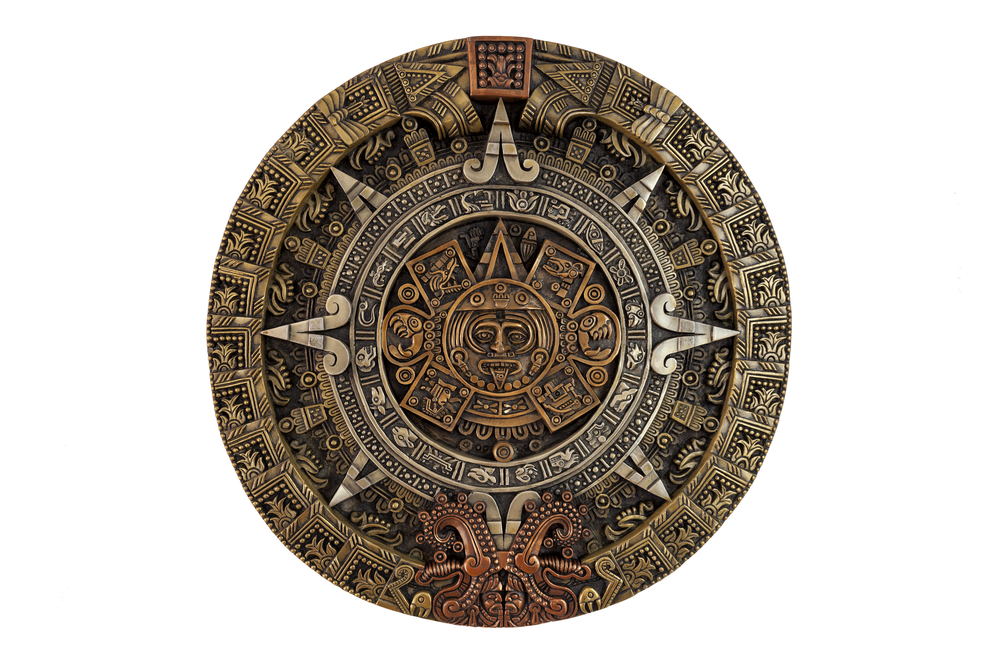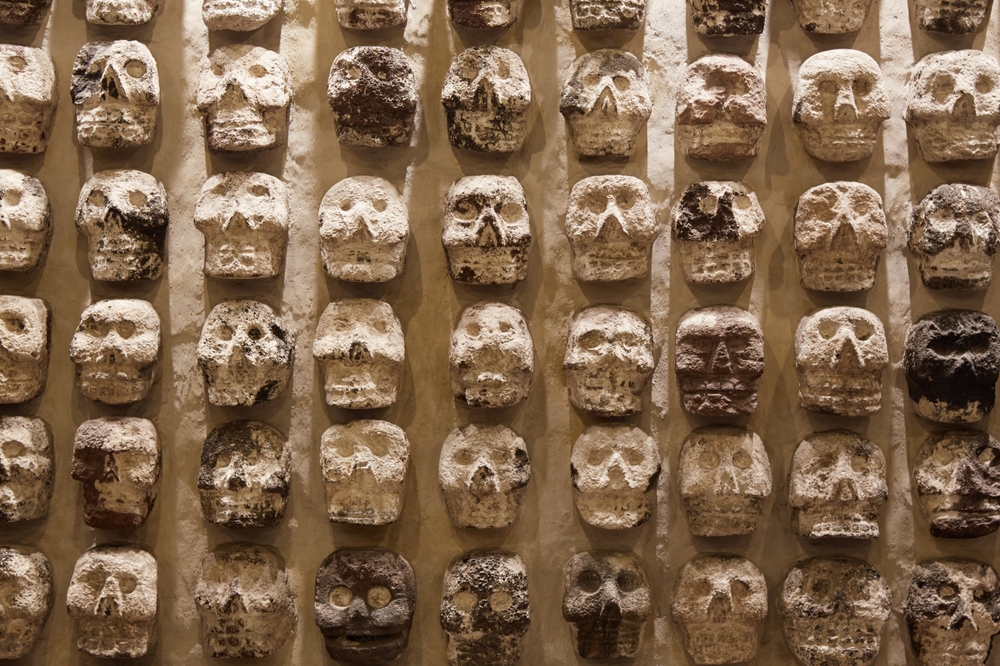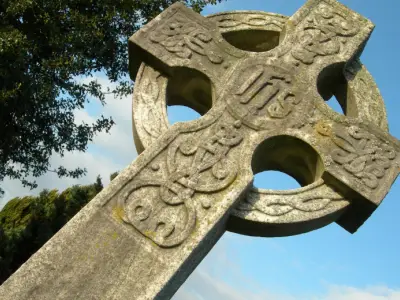The Aztecs are an ancient civilisation known for their complex society, innovative achievements, and mysterious rituals. Whether you're a history buff, a curious learner, or someone who simply loves uncovering the stories of the past, the Aztecs' tale is bound to intrigue and inspire you. Let's explore who the Aztecs were, from their daily lives to their impact on history.
Jump to:
The Aztec Empire

The Aztecs, known for their mighty empire, were a Nahuatl-speaking people who ruled over a large territory in what is now Mexico from the 14th to the 16th centuries. Their capital, Tenochtitlán, was a marvel of engineering and culture, situated on an island in a lake in the Valley of Mexico. Today, this location is the heart of Mexico City. The Aztec empire was a powerhouse of trade, warfare, and religion, influencing the region profoundly until its fall to Spanish conquerors in 1521.
Recommended for you!
Best SellersThe Aztec Society and Leadership
The Aztec civilisation blended complexity and innovation, and its society reflected the depth of its cultural beliefs and military capabilities.
Hierarchy and Class Structure
At the heart of Aztec society was a well-defined hierarchy that determined social status and the roles and responsibilities of every person. This structure was deeply intertwined with the Aztecs' spiritual beliefs and their view of the world.
- Nobles and Priests: The nobles (pipiltin) were often leaders in both political and military spheres, wielding considerable influence over the empire's governance and its expansionist endeavours. Priests, on the other hand, held sway over the spiritual and religious aspects of Aztec life, orchestrating the rituals and ceremonies to appease the gods. The positions of priests were highly respected, requiring extensive education and a deep understanding of Aztec theology and ritual practices.
- Merchants and Artisans: Just below the nobles and priests were the merchants (pochteca) and artisans. Merchants played a big part in the Aztec economy, travelling extensively to trade with distant lands, bringing back exotic goods and wealth that contributed to the empire's prosperity. Their unique position allowed them some privileges typically reserved for the nobility. Artisans, skilled in crafts such as pottery, featherwork, and metalwork, contributed to the cultural richness and technological advancement of the Aztec society. Their creations often held religious significance.
- Farmers and Labourers: The backbone of Aztec society was its farmers and labourers. They were responsible for owning the land and producing the food that sustained the empire. Despite their lower status, farmers were essential to the Aztec economy and were respected for their hard work. Labourers and slaves also played a role in society, performing the manual tasks necessary for the maintenance of the empire's infrastructure and its expansion.
Leadership: The Role of the Aztec Emperor
The Aztec emperor, or Huey Tlatoani, was the supreme ruler, embodying the political and religious leadership of the empire. The emperor was considered semi-divine, a direct intermediary between the people and the gods. His decisions were absolute, influencing every aspect of Aztec life from warfare and diplomacy to religious ceremonies. The selection of the emperor was typically from the nobility, emphasising the importance of lineage and divine right to rule.
Military Prowess: The Aztec Warriors
Integral to the expansion and defense of the Aztec empire were its warriors. Trained from a young age, Aztec warriors were highly skilled and fiercely loyal. The military was organised into different ranks, with achievements in battle opening the path to social advancement and even nobility. Warriors were revered in society, and their prowess was celebrated in art and literature.
The Role of War in Society
Warfare was not just a means of expansion but a fundamental aspect of Aztec culture and religion. Conquests brought in tribute, prisoners for sacrifice, and lands for cultivation, contributing to the empire's wealth and the population's sustenance. Military campaigns were often launched to capture prisoners for religious sacrifices, believed to be essential for appeasing the gods and ensuring the world's balance.
Aztec Daily Life

The daily existence of the Aztec people was filled with many activities and experiences, each reflecting the richness of their culture and the sophistication of their civilisation. From their farming techniques to their architectural choices and clothing styles, every aspect of Aztec life had meaning and purpose.
- Agriculture: The Aztecs were excellent farmers, demonstrating advanced agricultural techniques. They cultivated a variety of crops, with maize being the staple in their diet. This demonstrates not only their agricultural skill but also the importance of maize in their cultural and religious practices.
- Architectural Ingenuity: They lived in well-constructed homes that spoke volumes about their architectural knowledge and social hierarchies. These homes were made from sun-dried brick or stone, materials chosen based on one's social status. This choice of materials and the designs of their homes reflect the Aztecs' understanding of their environment and their social stratification.
- Reflective Clothing: Aztec clothing was a reflection of their position in society, varying from simple cotton garments for the common people to elaborate costumes adorned with feathers and jewellery for the elite.
Aztec Religion and Rituals
The spiritual life of the Aztec civilization was deeply complex and fascinating, rooted in a worldview that saw the divine in both the natural and supernatural realms. These beliefs and practices shaped their daily lives, societal norms, and even their aspirations.
The Pantheon of Gods and Goddesses
At the heart of Aztec religion were their many gods and goddesses, each embodying different aspects of the world and human experience. This diversity in divine representation allowed the Aztecs to interpret and interact with the forces of nature and society through a spiritual lens. For instance, Tlaloc, the rain god, was essential for agriculture, while Quetzalcoatl, the feathered serpent, was associated with wisdom and the wind. The Aztecs' relationship with their gods was reciprocal; they believed that human actions could influence the gods' wills and, in turn, the fate of the world.
The Central Role of Human Sacrifice
One of the most striking aspects of Aztec religion was the practice of human sacrifice. This ritual, often characterised by the dramatic removal of the heart, has fascinated and horrified observers throughout history. However, within the context of Aztec beliefs, these sacrifices were acts of religious significance. They were seen as important offerings to the gods, necessary to maintain the balance of the cosmos and ensure the sun's rise each day. Sacrifices were made to various deities, depending on the gods' specific demands and the time of year, with the belief that this would appease the gods and secure prosperity and stability for the Aztec people.
Rituals Beyond Sacrifice
While human sacrifice is the most infamous, it was just one aspect of the Aztecs' rich ritualistic life. The Aztecs observed a complex calendar of religious ceremonies and festivals that punctuated the year, involving music, dance, fasting, and feasting, all designed to honour the gods and secure their favour. For example, the Aztecs celebrated the month of Toxcatl with a ceremony dedicated to Tezcatlipoca, a god of the night sky and memory, which involved elaborate preparations and the selection of a young man who would embody the god for a year.
Education and Warfare: Extensions of Religious Belief
Religion also deeply influenced Aztec education and warfare. Children were taught about the gods, rituals, and moral codes from a young age, emphasising the importance of religion in guiding ethical and social conduct. Additionally, warfare was seen as a divine mandate, with conquests often undertaken to capture prisoners for sacrifice and to spread the worship of the Aztec gods. This integration of religion into aspects of education and warfare demonstrates how spirituality was woven into the very fabric of Aztec society, influencing its development and interactions with the wider world.
Aztec Innovations and Contributions
The Aztecs were ahead of their time in many areas, including agriculture, engineering, and the arts. They invented a highly productive form of agriculture called chinampas, or "floating gardens," which allowed them to cultivate crops on lake surfaces. Aztec engineers constructed an intricate system of aqueducts to supply water to their capital. In art, Aztec sculptures, pottery, and featherwork remain highly prized for their craftsmanship and beauty
The Legacy of the Aztecs

Despite the fall of their empire, the Aztecs' influence can still be felt in Mexico and beyond. Their contributions to agriculture, language, and art continue to enrich our world. Moreover, descendants of the Aztecs still live in Mexico today, preserving their heritage and traditions amidst a modern landscape.
Preserving Aztec Culture
Today, efforts to preserve and celebrate Aztec culture are evident in Mexico and among the Mexican diaspora. Festivals, museums, and educational programs seek to keep the Aztec spirit alive, offering a glimpse into this remarkable civilisation's past achievements and enduring legacy.
Frequently Asked Questions About the Aztecs
Why Did the Aztecs Sacrifice Humans?
The Aztecs believed that human sacrifice was necessary to satisfy the gods and maintain the balance of the universe. It was a way to repay the gods for their sacrifices in creating the world and to ensure the sun would rise each day. While the practice may seem barbaric to modern sensibilities, it was a deeply spiritual act for the Aztecs, integral to their understanding of the world and their place in it.
What Race Were the Aztecs?
The Aztecs belonged to the Nahuatl-speaking ethnic group, part of the larger Uto-Aztecan linguistic family that inhabited Central Mexico. They are often associated with the Mexica people, one of the Nahua groups that founded their capital, Tenochtitlán. The term "Aztec" itself is a modern designation, derived from their mythical homeland, Aztlan.
Are There Still Aztecs Living Today?
While the Aztec empire ceased to exist following the Spanish conquest, the descendants of the Aztec people, particularly the Nahua groups, are very much alive today. They continue to inhabit regions of Mexico, preserving their language, traditions, and some aspects of their ancient culture amidst a modern landscape.
Who Were the Aztecs Descended From?
The Aztecs were part of the Nahua peoples, who are believed to have migrated into the Central Mexican plateau from the north, possibly from a region known as Aztlan. Their migration stories and legends, including those encapsulating the founding of Tenochtitlán, are key to understanding Aztec mythology and identity.
What's the Difference Between Aztec and Mayan?
The Aztecs and Mayans were two distinct civilisations with their own cultures, languages, and territories. The Mayan civilisation predates the Aztecs by several centuries and was located in what is now Southeastern Mexico, Guatemala, Belize, and parts of Honduras and El Salvador. The Mayans are known for their advancements in writing, astronomy, and mathematics. In contrast, the Aztecs are known for their military prowess, architectural achievements, and complex social and political organisation.
What Did the Aztecs Invent?
The Aztecs were remarkable innovators, particularly in agriculture and architecture. They developed the chinampa system, an ingenious method of agriculture on artificial islands in lake beds that significantly boosted crop production. They also excelled in urban planning, as seen in the design of their capital, Tenochtitlán, which featured a sophisticated grid layout and an extensive system of canals and causeways.
Who Was the Aztecs' Biggest Enemy?
Before the arrival of the Spanish, the Aztec empire faced resistance and conflict with several neighbouring city-states and civilisations, notably the Tlaxcalans. The Tlaxcalans were among the fiercest opponents of the Aztecs and later allied with Hernán Cortés and his Spanish forces to overthrow the Aztec empire.
Why Were the Aztecs Considered Barbaric?
The label of "barbaric" often attributed to the Aztecs primarily stems from their practice of human sacrifice and the Spanish conquerors' accounts, which painted the Aztecs in a negative light to justify their conquest. While human sacrifice was indeed a part of Aztec religious practices, it's essential to understand this in the context of their beliefs and worldview, rather than solely through a modern or Eurocentric lens.
What Diseases Did the Aztecs Have?
Before the Spanish conquest, the Aztecs, like many indigenous peoples of the Americas, were not exposed to Old World diseases such as smallpox, measles, and influenza. The introduction of these diseases by the Europeans had devastating effects on the Aztec population, contributing significantly to their decline.
Did Aztecs Build Pyramids?
The Aztecs built pyramids which were central to their religious and ceremonial practices. These structures, often part of larger temple complexes, served as platforms for temples and were sites for rituals, including sacrifices. The Templo Mayor in Tenochtitlán is a prime example of Aztec pyramidal architecture.
Recommended for you!
Best SellersDiscover the Ancient Aztecs with Centre of Excellence
Dive deeper into the enigmatic world of the Aztecs with our Maya and Aztec History Diploma Course, meticulously crafted to unveil the intricacies of these ancient civilisations.
Why Centre of Excellence?
- Accessibility: We believe education should be accessible to all, which is why our courses are affordably priced. This ensures everyone has the opportunity to learn and grow.
- Flexibility: Our courses are designed with your lifestyle in mind, offering you the freedom to learn at your own pace. This means you can seamlessly integrate your learning journey into your daily life without any hassle.
- Supportive Learning Environment: Enrolling in our course means joining a supportive community of learners and gaining access to personalised tutor support. We're here to guide you every step of the way, making your learning experience as enriching as possible.
Special Invitation
We're excited to offer our Maya and Aztec History Diploma Course at a special discounted rate of just £29, saving you over £100!













